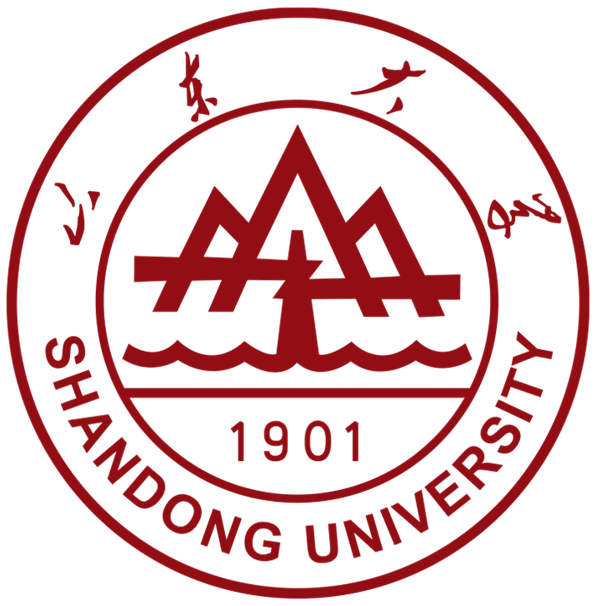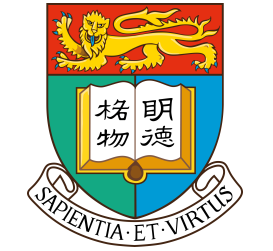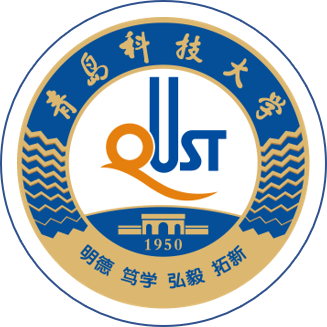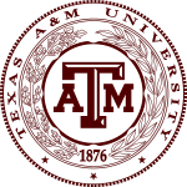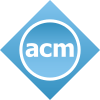NeurCADRecon: Neural Representation for Reconstructing CAD Surfaces by Enforcing Zero Gaussian Curvature
4AMSS, Chinese Academy Of Sciences 5Texas A&M University
Abstract

Despite recent advances in reconstructing an organic model with the neural signed distance function (SDF), the high-fidelity reconstruction of a CAD model directly from low-quality unoriented point clouds remains a significant challenge. In this paper, we address this challenge based on the prior observation that the surface of a CAD model is generally composed of piecewise surface patches, each approximately developable even around the feature line. Our approach, named NeurCADRecon, is self-supervised, and its loss includes a developability term to encourage the Gaussian curvature toward 0 while ensuring fidelity to the input points (see the teaser figure). Noticing that the Gaussian curvature is non-zero at tip points, we introduce a double-trough curve to tolerate the existence of these tip points. Furthermore, we develop a dynamic sampling strategy to deal with situations where the given points are incomplete or too sparse. Since our resulting neural SDFs can clearly manifest sharp feature points/lines, one can easily extract the feature-aligned triangle mesh from the SDF and then decompose it into smooth surface patches, greatly reducing the difficulty of recovering the parametric CAD design. A comprehensive comparison with existing state-of-the-art methods shows the significant advantage of our approach in reconstructing faithful CAD shapes.
Introduction
In this paper, (1) we propose to learn the neural SDF, in a self-supervised fashion, from a low-quality unoriented point cloud that potentially represents a CAD model, inspired by the fact that CAD model surfaces are typically piecewise smooth and approximately developable. (2) We define the developability loss term for encouraging the target Gaussian curvature to be either 0 or around pi/2 (tolerating the existence of tip points), which is achieved by introducing a double-trough curve. (3) We leverage dynamic sampling to handle data imperfections, allowing for adaptive loss measurement varying with changes in the underlying surface. Extensive tests on four open datasets showcase our significant advantage in reconstructing CAD-type shapes.

A gallery of reconstruction results by our NeurCADRecon.

By utilizing a specially designed double-trough (DT) curve, we allow the presence of non-zero Gaussian curvature, but are more inclined to favor zero Gaussian curvature. Without the usage of the tolerating technique, bulges may arise around the tip points.
Results
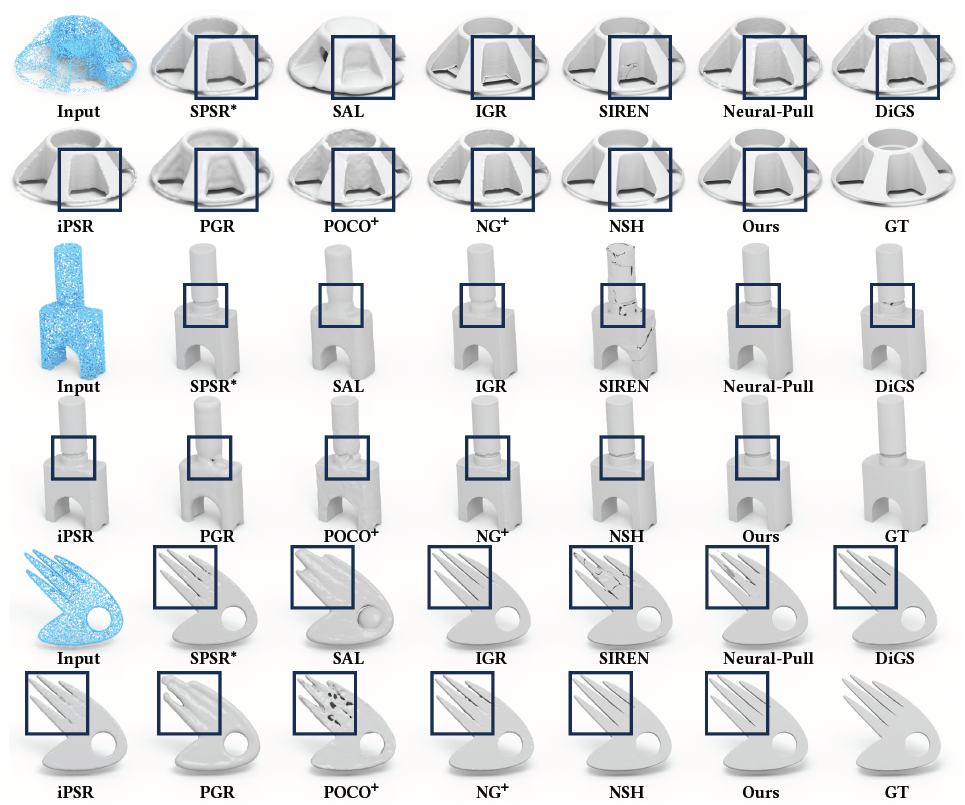
Comparison with state-of-the-art surface reconstruction methods is conducted on a variety of challenging CAD models, including those with thin tubes, tiny links, sharp corners, and narrow slits. The first model showcases reconstruction results of varying density input points (10K and 5K simultaneously), while the remaining two models are based on 10K input points. Method marked with ‘∗’ requires normals, and those marked with ‘+’ are supervision-based. Across the board, our NeurCADRecon outperforms other methods in terms of reconstruction fidelity on complex CAD models.

Evaluate various point surface reconstruction approaches on a point cloud with 0.5% Gaussian noise. Our method stands out as the only approach that effectively recovers a smooth CAD surface even in the presence of input points affected by noise.

Experiments are conducted on sparse point clouds containing only 1K points, and our results exhibit a close alignment with the ground truth for the provided input. This comparison highlights the substantial advantage of our algorithm in dealing with sparse raw data.

In a comparison with state-of-the-art methods using an incomplete point cloud as input, characterized by data imperfections across feature points and lines, our NeurCADRecon outperforms other methods in terms of reconstruction accuracy.
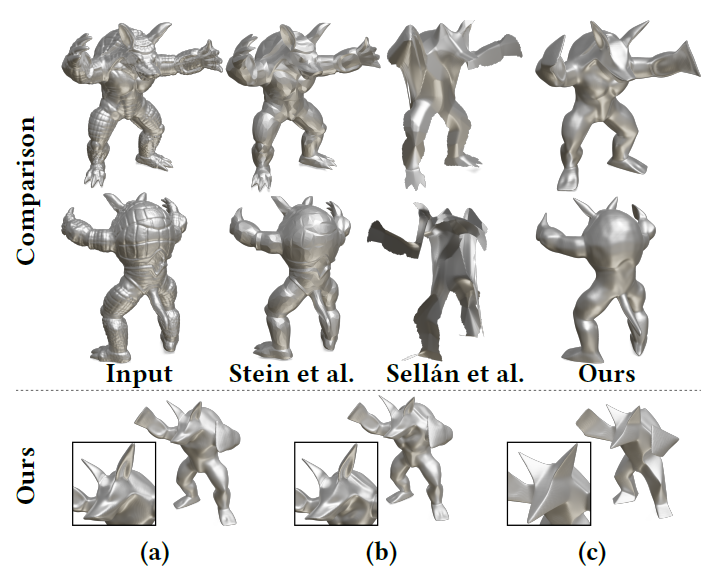
The upper part of this figure presents the results achieved by our proposed method and those reported in Stein et al. [2018] and Sellán et al. [2020] for the Armadillo model. The lower part of the figure showcases the results generated by our method under different parameter settings: (a) 𝜆_Gauss = 3, #iter 1K, (b) 𝜆_Gauss = 3, #iter 7K, (c) 𝜆_Gauss = 100, #iter 7K.
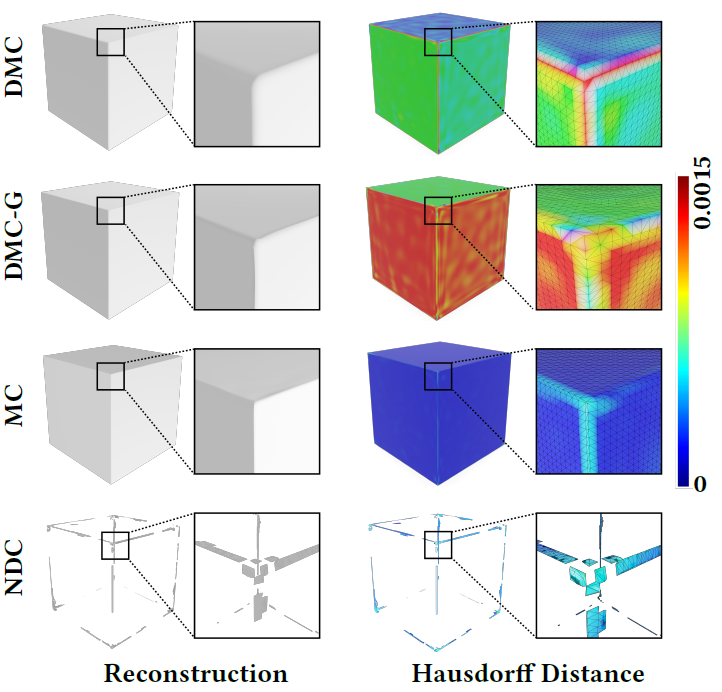
The zero isosurface extraction results of Neural Dual Contouring (NDC), Marching Cubes (MC), Dual Marching Cubes with gradient (DMC-G), and Dual Marching Cubes without gradient (DMC) for our predicted SDF.
Citation
@article{Dong2024NeurCADRecon,
author={Dong, Qiujie and Xu, Rui and Wang, Pengfei and Chen, Shuangmin and Xin, Shiqing and Jia, Xiaohong and Wang, Wenping and Tu, Changhe},
title={NeurCADRecon: Neural Representation for Reconstructing CAD Surfaces by Enforcing Zero Gaussian Curvature},
journal={ACM Trans. Graph.},
publisher={Association for Computing Machinery},
address={New York, NY, USA},
year={2024},
volume={43},
number={4},
issn={0730-0301},
url={https://doi.org/10.1145/3658171},
doi={10.1145/3658171}
}
This page is maintained by Qiujie Dong.
